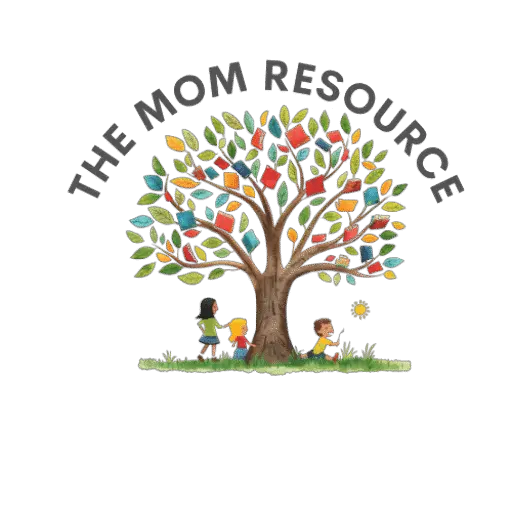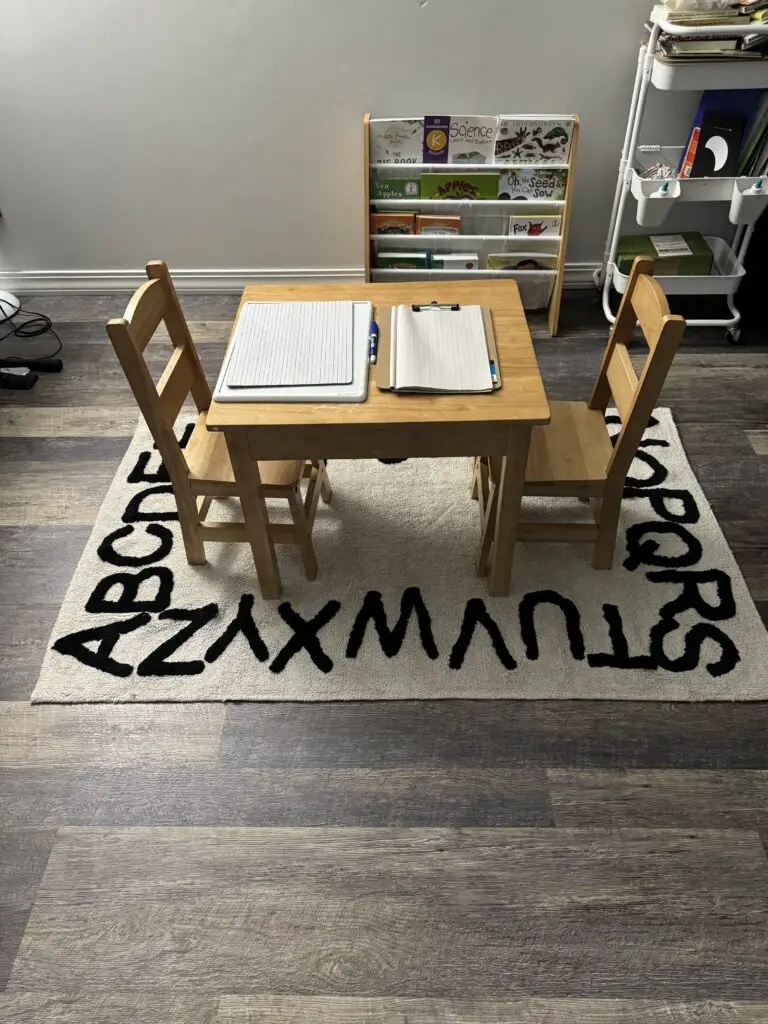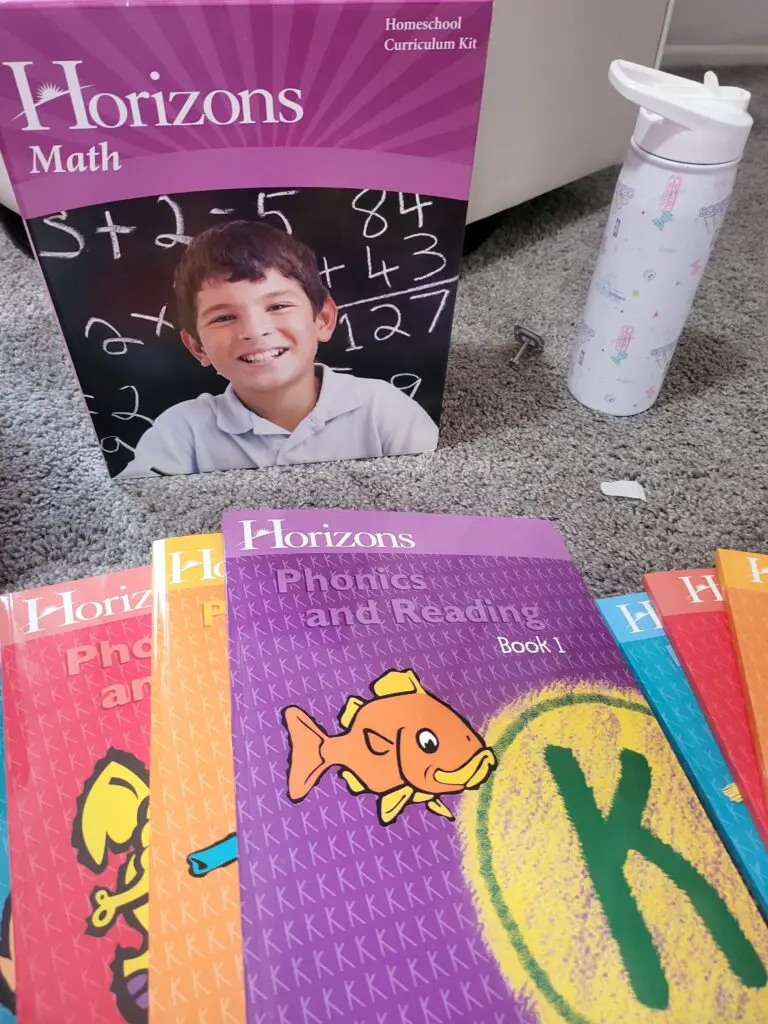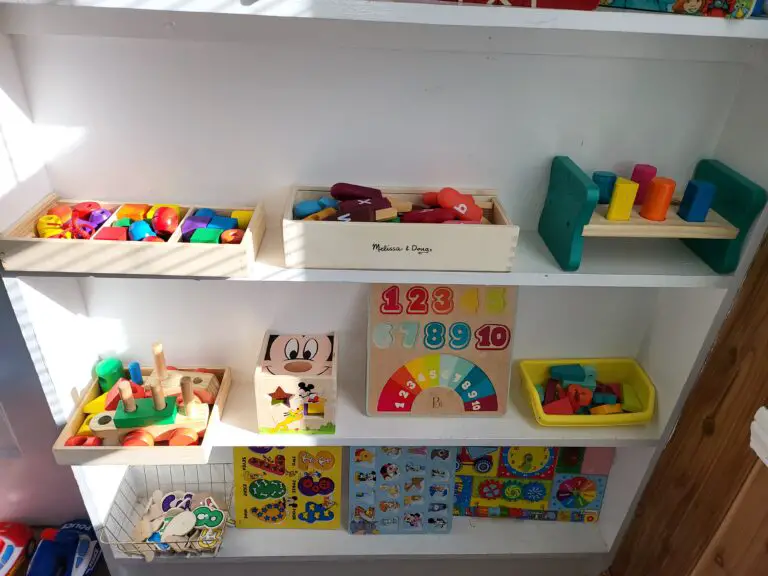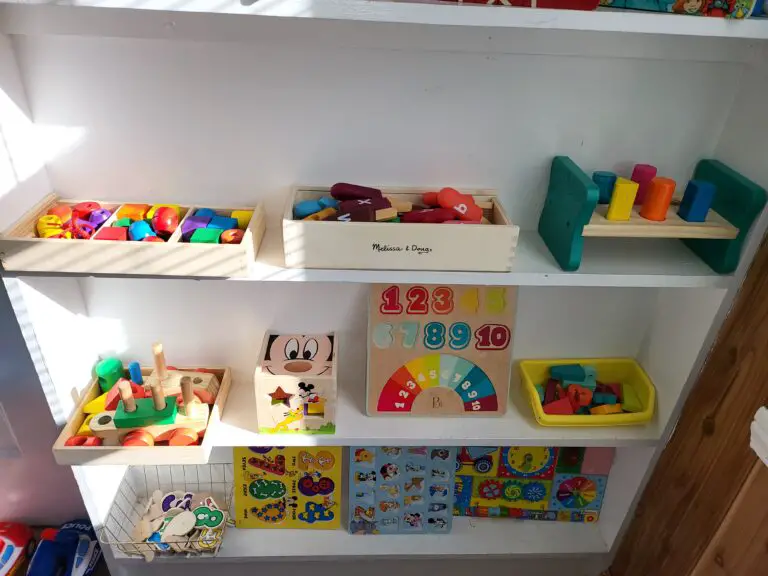Best Homeschool Curriculum in 2025: Your Complete Guide to Finding the Perfect Fit
Finding Your Family’s Perfect Homeschool Curriculum
According to recent data, over 3.7 million students are now homeschooled in the United States, and that number keeps growing every year! If you’re apart of the statistics and you’ve decided to homeschool your child, choosing the best homeschool curriculum can feel overwhelming. This is especially true if you’re new to homeschooling.
I remember staying up all night researching curriculum choices, learning styles, and homeschool videos, wondering if I was making the right choice for my kids. The truth is, there’s no single “best” curriculum that works for every family. The best homeschool curriculum is the one that matches YOUR child’s learning style, YOUR teaching comfort level, and YOUR family’s unique rhythm and goals.
After years of navigating curriculum choices, switching programs mid-year (yes, I’ve been there!), and talking with countless homeschool families, I’ve learned what actually matters when selecting educational materials.
In this guide, I’ll walk you through the top curriculum options for 2025, breaking down their approaches, strengths, and ideal fits so you can make a confident decision without the overwhelm.
Whether you’re a brand-new homeschooler feeling completely lost or a veteran looking to switch things up, this comprehensive guide will help you find the curriculum that makes both teaching and learning a joy rather than a daily battle.
Understanding Different Homeschool Curriculum Approaches
Before diving into specific curriculum reviews, it’s essential to understand the major educational philosophies that shape how different programs teach. This foundation will help you identify what resonates with your family’s values and goals.
- Classical education emphasizes grammar, logic, and rhetoric through the trivium framework
- Charlotte Mason approach focuses on living books, nature study, and short lessons
- Unit studies integrate multiple subjects around central themes
- Traditional textbook method mirrors conventional school structure with workbooks and tests
- Unschooling and child-led learning follows the student’s interests and natural curiosity
- Eclectic homeschooling combines elements from multiple approaches
Classical education has gained tremendous popularity, and programs like Classical Conversations have become household names in the homeschool community. The classical method divides learning into three stages: the grammar stage (memorization and facts), the logic stage (critical thinking and analysis), and the rhetoric stage (eloquent expression). I’ve watched this approach transform students into articulate, thoughtful individuals who can discuss complex topics with confidence.
However, classical education isn’t for everyone. It requires significant parent involvement and can feel rigid for families who prefer flexibility. When I tried implementing a purely classical approach with my kinesthetic learner, we decided it wasn’t best for us. The heavy emphasis on memorization and sitting still didn’t match my young learner’s need for movement and hands-on learning. That’s when I realized that understanding your child’s learning style matters just as much as understanding curriculum philosophy.
The Charlotte Mason method offers a gentler, more literature-based approach that many families find refreshing. Instead of dry textbooks, students learn through “living books” written by passionate authors who bring subjects to life. Nature study, art appreciation, and copywork form integral parts of this method. The short lesson approach, (typically 15-20 minutes per subject), for younger students, prevents mental fatigue and keeps learning fresh.
Unit studies create natural connections between subjects by exploring themes from multiple angles. When studying ancient Egypt, for example, students might read historical fiction, calculate pyramid dimensions in math, create papyrus art projects, and study the Nile River’s geography. This integrated approach helps children see how knowledge connects rather than existing in isolated subject boxes. I’ve found unit studies particularly effective for teaching multiple ages together, as you can adjust the complexity of assignments while everyone explores the same fascinating topic.
Best Complete Homeschool Curriculum Packages
Complete curriculum packages provide everything you need in one convenient bundle, making them especially attractive for new homeschoolers or busy families who want a streamlined approach.
- All-in-one planning eliminates the stress of piecing together multiple subjects
- Consistent educational philosophy throughout all subjects
- Age-appropriate progression with built-in scope and sequence
- Teacher support materials including lesson plans and answer keys
- Potential cost savings compared to purchasing subjects individually
Abeka remains one of the most comprehensive and well-established complete curriculum packages available. Their traditional approach uses colorful textbooks, workbooks, and a structured daily schedule that clearly outlines what to teach and when. For parents who feel uncertain about their ability to teach certain subjects, Abeka’s detailed lesson plans provide tremendous confidence. The curriculum is academically rigorous and prepares students well for standardized testing.
That said, Abeka requires significant daily time commitment and can feel overwhelming for families juggling work or multiple children. I tried Abeka for a year, and found myself spending a large amount of our days, just trying to complete all the assignments. The curriculum doesn’t leave much room for pursuing rabbit trails or child-led interests, which frustrated my naturally curious 5 year old at the time, who wanted to dive deeper into topics that fascinated them. We decided to save Abeka for high-school years.
Sonlight takes a completely different approach, building their entire curriculum around carefully curated literature. Their instructor guides integrate read-alouds, reader books, and textbooks into a cohesive daily plan that brings history, geography, and culture alive through stories. The 4-day schedule leaves Fridays free for field trips, co-ops, or catch-up work.
The main drawback of Sonlight is the sheer volume of reading required. If you’re not a confident reader or struggle to find reading time, you might fall behind quickly. The initial investment is also substantial, though their resale value remains strong in the homeschool community. I calculated that buying Sonlight new cost about $800-1000 per year per student, but I recouped nearly 60% by reselling at the end of each year.
The Good and the Beautiful has exploded in popularity over recent years, and honestly, I understand why. Their curriculum combines beautiful design with solid academics at an incredibly affordable price point. The religious content is Christian but non-denominational, and the nature-inspired approach incorporates art and character development throughout. Their language arts program is particularly strong, building skills systematically while keeping lessons engaging.
My experience with The Good and the Beautiful was largely positive, and we currently still use this curriculum today. The curriculum works best for families who enjoy a gentle, literature-rich approach and don’t mind doing some additional research for certain science topics. At around $300-400 for a complete year, it’s hard to beat the value, especially for families on tight budgets, and busy schedules.
Subject-Specific Curriculum Recommendations
Sometimes the best approach involves selecting individual programs for each subject rather than using a complete package. This eclectic method allows you to customize your child’s education precisely to their needs and learning style.
- Math programs range from conceptual to procedural approaches
- Language arts encompasses reading, writing, grammar, and spelling
- Science curricula vary from textbook-based to hands-on experimental
- History and social studies options include chronological, geographical, and thematic
- Foreign language programs utilizing various methodologies
For math, Saxon Math has been the gold standard for decades, providing incremental learning with continuous review built into every lesson. The systematic approach ensures students master concepts through repeated practice, making it ideal for kids who need that reinforcement. However, Saxon can feel tedious for students who grasp concepts quickly and don’t need extensive practice
Math-U-See offers a completely different philosophy, using manipulatives and video instruction to teach concepts in depth before moving forward. The multi-sensory approach works beautifully for visual and kinesthetic learners who struggle with abstract mathematical concepts.
Teaching Textbooks provides an independent, computer-based math program with built-in video instruction and automatic grading. For families needing their students to work independently or parents who lack confidence in their math teaching abilities, Teaching Textbooks offers a fantastic solution. The program includes helpful hints when students struggle and tracks progress automatically. My only complaint is that the program sometimes allows students to advance without truly mastering concepts, so occasional parent oversight is necessary.
For language arts, Institute for Excellence in Writing (IEW) has revolutionized how I teach writing. Rather than expecting kids to somehow intuitively know how to write well, IEW provides concrete methods and structures that make writing accessible. The program teaches nine structural models and six stylistic techniques that students apply across various writing genres.
All About Reading and All About Spelling form a comprehensive literacy program using multi-sensory methods perfect for struggling readers or students with dyslexia. The systematic, phonics-based approach includes tiles, cards, and engaging activities that make learning to read feel like play rather than work. These programs require more parent involvement than simply handing your child a workbook, but the results are worth every minute invested.
Curriculum for Different Learning Styles and Special Needs
Recognizing that every child learns differently is crucial for homeschool success. The flexibility to adapt your approach to your child’s unique needs is one of homeschooling’s greatest advantages.
- Visual learners need strong graphics, diagrams, and written instructions
- Auditory learners benefit from discussions, read-alouds, and audio resources
- Kinesthetic learners require hands-on activities and movement
- Gifted students need advanced content and intellectual challenge
- Struggling learners benefit from multi-sensory and remedial approaches
- Special needs students require specialized curriculum and accommodations
For visual learners, curriculum with strong graphics and visual organization works best. Programs like Apologia Science, with their beautiful photography and detailed diagrams, appeal strongly to visual students. I noticed my visual learner would spend extra time studying the images in her science textbook, often learning additional information just from careful observation.
Kinesthetic learners need to move and touch to learn effectively. Unit studies with lots of hands-on projects, science experiments, and artistic activities keep these kids engaged. When my kinesthetic son was young, we did most of our learning outside or with hands-on manipulative. Forcing him to sit still at a desk actually prevented learning rather than facilitating it. Once I accepted that learning doesn’t require sitting quietly, everything changed.
For gifted students, enrichment and acceleration are key. William and Mary language arts curriculum, Art of Problem Solving for math, and advanced placement courses through providers like Outlier or Modern States challenge bright students appropriately.
Students with learning disabilities, ADHD, dyslexia, or other challenges need specialized approaches. All About Learning’s programs for reading and spelling incorporate Orton-Gillingham methodology proven effective for dyslexic students. For ADHD students, shorter lesson times, frequent breaks, and hands-on activities prevent frustration.
Right Start Mathematics uses a hands-on approach with an abacus and games that make math concepts concrete and accessible for students who struggle with abstract thinking. The AL Abacus becomes a powerful tool for understanding place value, addition, subtraction, and even advanced operations.
Online and Digital Homeschool Curriculum Options
Technology has transformed homeschooling, offering flexibility and resources that weren’t available even five years ago. Digital curriculum can provide independence for students and relief for overwhelmed parents.
- Self-paced learning allows students to move at their own speed
- Automatic grading saves parents tremendous time
- Video instruction provides expert teaching in every subject
- Interactive elements engage digital-native students
- Accessibility from anywhere with internet connection
Time4Learning offers a complete online curriculum for PreK through 12th grade with an interactive, game-like interface that appeals to younger students. The automated grading and record-keeping eliminate much of the administrative burden of homeschooling. Parents receive detailed progress reports showing exactly where their student excels and struggles. I used Time4Learning as a supplement during particularly busy seasons when I needed my kids to work more independently.
The flexibility is wonderful, but the screen time can be concerning. We had to set strict boundaries about completing offline activities to balance the digital learning. Some students also miss the tactile experience of writing in physical books, which research suggests aids memory retention.
Khan Academy provides completely free, high-quality video instruction across subjects, making it an incredible resource for families on tight budgets. The math program is particularly strong, with practice problems that adapt to student performance. The bite-sized video format allows students to pause, rewind, and rewatch explanations until concepts click.
Outschool has revolutionized online learning by connecting students with expert teachers for live classes on virtually any topic imaginable. From Shakespeare literature analysis to Minecraft coding to marine biology, Outschool offers thousands of classes for all ages and interests. These classes provide social interaction and expert instruction that many homeschool families crave.
Power Homeschool, formerly Acellus, provides a full accredited online curriculum with video lessons and interactive activities. The program is reasonably priced and offers official transcripts, making it popular with high school families. However, I’ve heard mixed reviews about the quality and religious neutrality of certain lessons, so previewing content before assigning it is wise.
Budget-Friendly Homeschool Curriculum Solutions
Homeschooling doesn’t have to break the bank. With creativity and resourcefulness, you can provide an excellent education on a tight budget.
- Free online resources from Khan Academy, PBS LearningMedia, and public libraries
- Used curriculum sales through homeschool co-ops and Facebook groups
- Curriculum swaps with other homeschool families
- Public domain materials including classic literature and historical documents
- DIY curriculum using library books and online resources
Easy Peasy All-in-One Homeschool offers a completely free, full curriculum online for grades K-12. Created by a homeschool mom, the program uses free online resources organized into daily assignments. While not flashy, Easy Peasy provides a legitimate education at zero cost. Several families I know have used Easy Peasy successfully, particularly during financial hardships or when starting homeschooling mid-year without funds for curriculum.
The Good and the Beautiful, mentioned earlier, deserves another mention for budget-conscious families. At $300-400 for a complete year of core subjects, it costs less than many single-subject curricula from other publishers. The downloadable format allows families to print only what they need or access everything digitally to save even more on printing costs.
Your public library is an often-overlooked treasure trove of free homeschool resources. Most libraries now offer digital collections including audiobooks, e-books, online courses, and streaming videos through services like Hoopla and Libby. I’ve built entire unit studies using nothing but library books. Librarians often love helping homeschool families and can alert you to new acquisitions matching your studies.
Used curriculum marketplaces like Homeschool Classifieds and local Facebook homeschool groups offer significant savings on gently used materials. I’ve purchased $500 curriculum sets for $150-200, allowing us to afford higher-quality programs than we could buy new. When finished, we resell for approximately what we paid, essentially borrowing curriculum for the cost of shipping. Building relationships with other homeschool families can lead to curriculum swaps where you trade materials you’ve finished for subjects you need.
BookShark, Sonlight’s secular sister company, offers payment plans that spread the cost over several months, making their comprehensive curriculum more accessible for families who can’t afford the upfront investment. Many curriculum publishers offer similar payment options or early-bird discounts if you plan ahead and purchase during sale periods.
How to Choose the Right Curriculum for Your Family
With so many excellent options available, how do you actually make a decision? Here are the key factors to consider when evaluating curriculum.
- Child’s learning style and preferences should drive curriculum choices
- Parent’s teaching comfort level with different subjects and methods
- Family schedule and lifestyle determining structure needs
- Educational philosophy and goals aligning curriculum with values
- Budget constraints determining feasible options
- Support and community available for different curriculum choices
Start by honestly assessing your child’s learning style through observation and possibly learning style assessments available online. Notice when your child is most engaged and learning effectively, consider what conditions create those moments. Also consider your own teaching preferences and strengths too.
If you’re highly organized and love planning, a detailed curriculum like Abeka might feel comfortable. If spontaneity and flexibility are your style, a unit study or unschooling approach might reduce stress. There’s no virtue in forcing yourself into a teaching style that makes you miserable. Your attitude directly affects your children’s learning experience.
Think about your family’s unique schedule and circumstances. Do you have a newborn requiring frequent nursing breaks? Are you working part-time? Do you travel often? These practical considerations should influence your curriculum choice. When I had a baby, we switched to a four-day schedule with shorter lessons and more independent work for older siblings. Matching curriculum to your actual life, not your idealized version of homeschool, prevents burnout.
Don’t be afraid to try something new or change course mid-year if something isn’t working. The curriculum police won’t come arrest you for switching math programs in January! I’ve switched curriculum mid-year a few times, and my kids are thriving. The flexibility to adjust is one of homeschooling’s greatest benefits, not a failure on your part.
Connect with homeschool support groups, both local and online, where you can ask questions and get recommendations from experienced families using various curricula. Homeschool conventions allow you to physically examine materials before purchasing, and many curriculum publishers offer sample pages or trial periods. Take advantage of these resources before making expensive commitments.
Conclusion: Your Perfect Curriculum Is Out There
Choosing the best homeschool curriculum doesn’t require finding the one perfect program that does everything flawlessly. Instead, it means selecting materials that align with your child’s needs, your teaching style and your family’s goals, while being willing to adjust when necessary.
Remember that curriculum is a tool to facilitate learning, not the learning itself. The relationships you build, the conversations you have, and the curiosity you nurture matter far more than which specific textbook you use for fourth-grade grammar. I’ve seen beautifully educated children emerge from families using elite expensive curricula and from families learning primarily from library books and real-world experiences.
Start with one of the well-regarded options covered in this guide, give it a genuine try for at least a few months, and then evaluate honestly whether it’s working for your family. Be patient with yourself and your children as you settle into a rhythm. Most families take at least a year or two to find their stride and discover which approaches work best.
Trust your instincts as a parent, you know your children better than any curriculum publisher possibly could. If something feels wrong, it probably is, regardless of how many other families rave about that program. And if something feels right and your children are learning and growing, that’s all the validation you need.
What curriculum are you considering for your homeschool journey? I’d love to hear about your experiences and help answer any questions you might have. The homeschool community thrives when we share our successes, failures, and lessons learned with one another.
Happy homeschooling!
